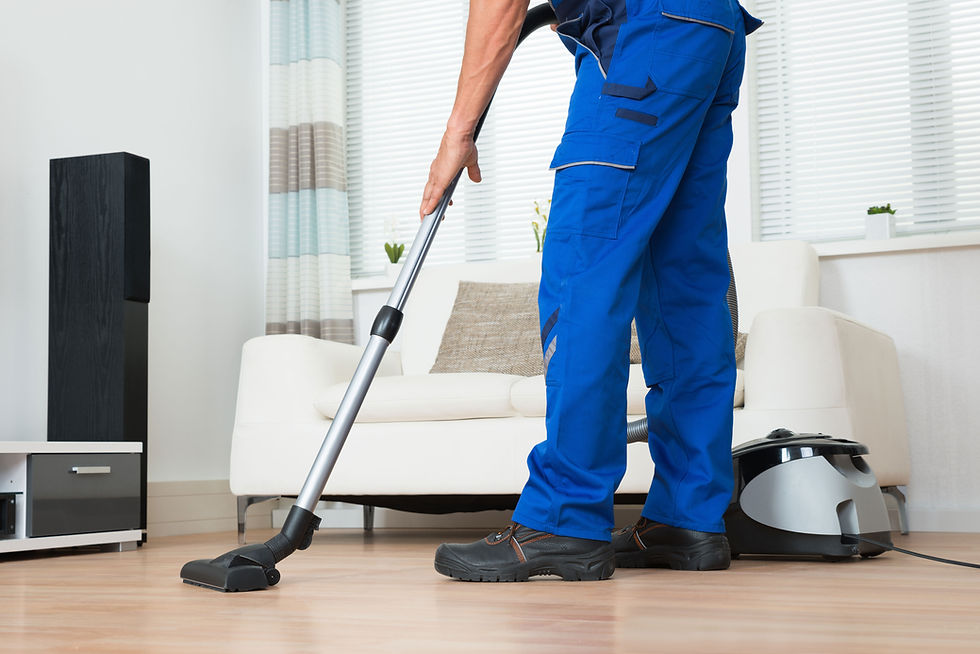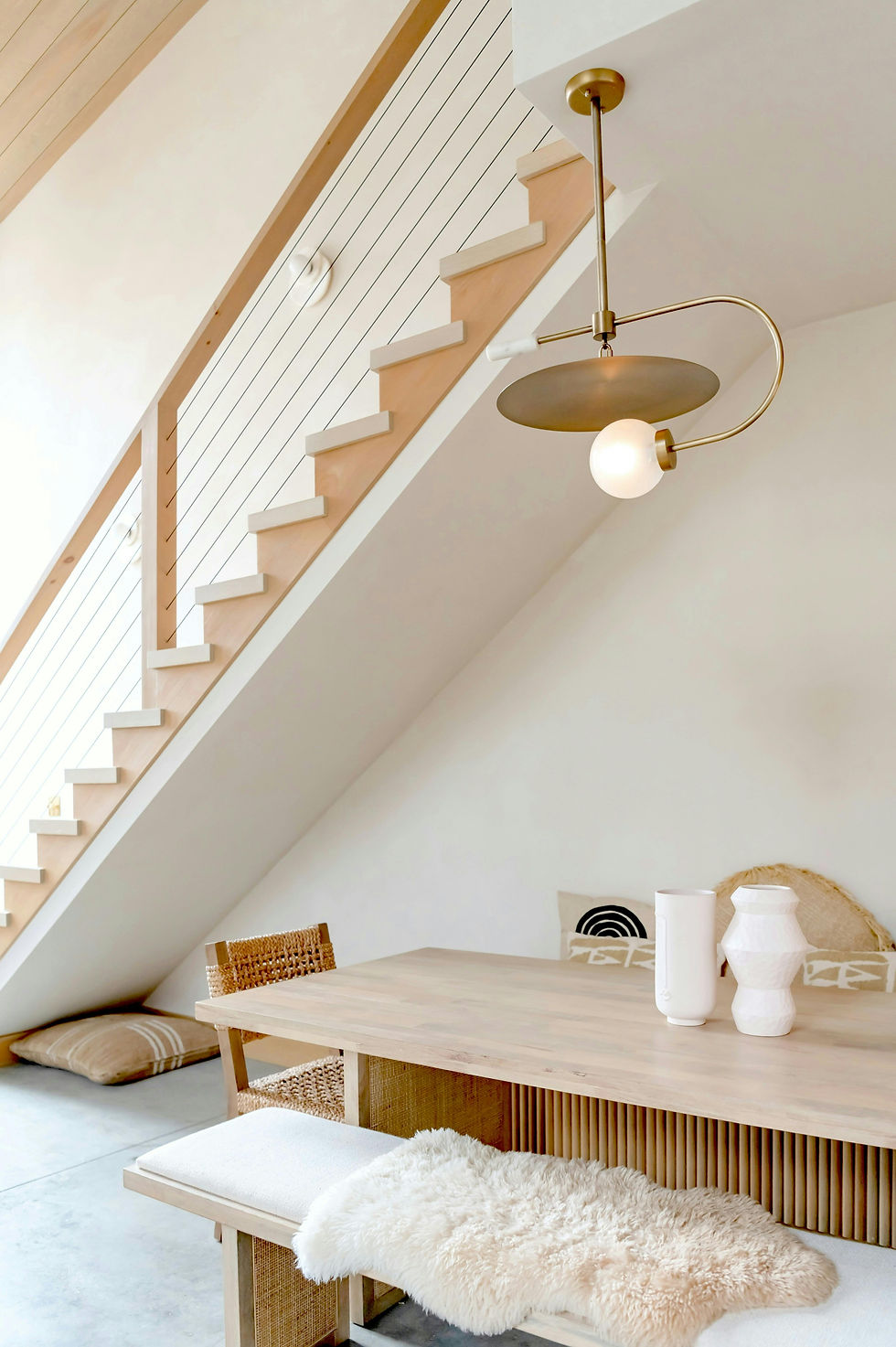Cedar Fever Season in San Antonio: A Home Cleaning Game Plan That Actually Reduces Allergens
- Oliver Owens
- Sep 24
- 6 min read
If you’ve lived in San Antonio long enough, you know when cedar fever hits—eyes itch, noses run, and suddenly everyone is swapping filter tips in the H-E-B aisle. I still remember the January our neighbor swore his dog was “sad” until a tech pulled a mountain of dust and cedar pollen off the return vent. The house didn’t feel dirty, but the air sure did.

The good news: you can’t stop mountain cedar from doing its thing outside, but you can keep far less of it inside. With a smart cleaning routine and a few small changes, your home (or office) can feel a lot calmer during peak counts.
Below is the exact, practical plan we use at U B Lazy Cleaning Service when families book us for winter allergy relief across San Antonio—from Stone Oak and Hollywood Park to Alamo Heights and the Medical Center. If you decide partway through that you’d rather hand it off, we can jump in with a tailored Deep Cleaning or set an easy Residential Cleaning cadence and stick with it all season.
What Is “Cedar Fever,” and Why Does It Wreak Havoc Indoors?
“Cedar fever” is the nickname for allergic reactions to mountain cedar (Ashe juniper) pollen, which typically peaks from December through February in Central Texas. Those tiny grains ride in on your clothes, shoes, pets, and airflow. They settle into soft surfaces, cling to static-charged screens and blinds, and—this is the sneaky part—recirculate via your HVAC if you don’t stay ahead of it.
Want a quick, credible read on the problem? The Texas A&M Forest Service has a clear explainer on mountain cedar and seasonal pollen behavior (a great shareable reference for your readers and tenants).
How Pollen Behaves Inside a Home
It sticks to you. Hair, jackets, backpacks, and pet fur are classic carriers.
It loves fabric. Sofas, curtains, bedding, and rugs trap particles.
It rides the air currents. Return vents, leaky ducts, and rattly fan blades can redistribute pollen.
It settles… until you walk past. One step on a rug and a microcloud lifts back into the air.
This is why the “order of operations” matters so much when cleaning for allergies.
The Cedar Fever Cleaning Blueprint (Daily + Weekly)
Think entry control → capture → remove → keep it from coming right back. Here’s how we structure it at U B Lazy.
1) Block pollen at the door
Place sturdy mats outside and inside each entry.
Create a simple landing zone: shoes off, jackets hung, pet wipes by the door.
Vacuum those mats every 1–2 days during peak pollen; they do the heavy lifting.
2) Filter smarter, not harder
Use high-quality filters (MERV 11–13 if your system supports it).
Change them more often during cedar season—every 30 days is a good baseline.
Run the fan in “on” mode for 20–30 minutes after you arrive home to strip airborne pollen through the filter.
Dust supply and return vents weekly with a microfiber head, then vacuum the grill.
3) Dry dust first, then damp wipe
Start high (ceiling corners, fan blades, tops of cabinets), then work down.
Always use microfiber for dry dusting; it captures instead of pushing pollen around.
Follow with a lightly damp microfiber to remove the fine residue.
4) Vacuum like a pro (HEPA matters)
Use a HEPA-rated vacuum with sealed filtration.
Slow passes, edge first, then the center of rooms.
Upholstery tool on sofas, chairs, and pet beds at least weekly; more if symptoms spike.
5) Floors last, and make it quick
Hard floors: vacuum first, then damp-mop with a neutral-pH solution and a microfiber flat mop.
Avoid soaking—excess water can spread residue and leave dull film.
Carpets/rugs: vacuum thoroughly; consider a mid-season professional hot-water extraction if allergies are severe.
6) Laundry is your silent hero
Wash pillowcases and sheets weekly in hot water (check labels).
Blankets and throws every 1–2 weeks during peak.
If symptoms are rough, toss jackets and hoodies in the dryer on air-only for 10 minutes when you come in; it knocks a lot of pollen loose.
Room-by-Room: Where Cedar Hides (and What to Do)
Bedrooms: build your sanctuary
Minimal textiles near the bed—skip extra pillows and heavy drapes during peak months.
Encased mattress and pillow protectors help more than people expect.
Vacuum under the bed weekly (use the crevice tool).
Keep a simple, closed hamper; open baskets stir dust whenever you pass.
Living room: high traffic, high payoff
Vacuum upholstery, especially arms and headrests.
Wipe remote controls, lamp switches, and side tables with a damp microfiber.
Clean blinds with a microfiber glove; for fabric panels, use a vacuum brush attachment.
Don’t forget fan blades—dust and pollen love the leading edge.
Kitchen: neutral air, neutral surfaces
Wipe cabinet faces and hardware (we touch them all day).
Degrease the range hood filter—grease traps dust and pollen.
Keep trash covered; change liners frequently to avoid stirred-up dust.
Bathrooms: quick but consistent
Microfiber wipe of flat surfaces, switch plates, and door handles.
Launder bathmats weekly—those fibers collect everything.
Laundry room: hidden hotspot
Clean the dryer lint screen every load; vacuum the recess weekly.
Wipe the tops and edges of machines—static attracts dust.
Pets and Cedar: A Friendly Routine That Helps
Keep a soft grooming mitt near the door; a 30-second wipe reduces dander and pollen transfer.
Wash pet bedding weekly on hot; vacuum the cushion seams.
Brush outdoors when possible (and not on a breezy day).
What Not to Do (Common Mistakes)
Feather dusters. They look charming and launch pollen right back into the air.
Over-fragranced sprays. They can irritate airways without actually removing allergens.
Mopping first. Dust everything first so you’re not dragging damp residue across floors.
Rarely changed filters. A choked filter recirculates dust and strains your system.
Green, Effective, and Safe: Products That Work
If you want to keep things gentle for kids, pets, or sensitive noses, you’re in good hands. Our Green Cleaning approach uses effective, low-odor products with the right tools (HEPA vacuums, sealed bags, microfiber systems). When disinfection is appropriate, we choose options with clear dwell-time labels and use them only where they make sense (handles, railings, switches). Over-disinfecting can actually backfire on indoor air quality.
Weekly Cedar-Season Checklist (Clip-and-Keep)
Entry mats vacuumed (inside/outside)
Return and supply vents dusted
Ceiling fans and high edges dry-dusted
Upholstery vacuumed (including arms/headrests)
Bedrooms: under-bed vacuum + fresh pillowcases/sheets
Bath mats and throws laundered
Hard floors vacuumed then damp-mopped
Filters checked (replace as needed)
If you’d like, we can tailor this into a simple fridge-door printable and build a Residential Cleaning schedule around it so your family doesn’t have to think about it.
For Offices and Studios: Keep Teams Working, Not Sniffling
Cedar hits workplaces hard too—especially shared desks and break areas.
Map high-touch points (door pulls, copy panel, fridge handles, conference remotes) and wipe daily with a low-odor cleaner.
HEPA vacuum entry rugs and traffic lanes every visit; they’re your first pollen filters.
Restrooms and kitchens: neutral cleaners + microfiber; avoid heavy scents.
Consider running your fan for a short window before open hours to clear overnight dust.
If you manage a lobby, clinic, or studio, our Commercial Cleaning team can schedule around peak times so customers never walk into yesterday’s sneeze season.
When to Call the Pros (and How We Time It)
Before peak season: Book a full Deep Cleaning to reset—vents, fans, baseboards, upholstery vacuuming, blinds, and under/behind accessible furniture.
Mid-season tune-up: A focused visit for upholstery, bedrooms, and high-traffic floors keeps symptoms lower.
After a windy front or heavy cedar alert: A quick return-vent/entryway service makes a bigger difference than most people expect.
We bring HEPA-rated equipment, sealed bags, and microfiber systems that capture (not spread) particles, then we close out safely—lights off, doors locked, quick note if we spot anything you should know about.
Frequently Asked (Short, Honest Answers)
Does an air purifier help?
Yes—look for true HEPA and size it to the room. Place it where you actually sit or sleep, not in a corner.
What MERV filter should I use?
Many SA systems do well at MERV 11–13; check your unit specs to avoid restricting airflow.
Do I need to replace carpet?
Not usually. Consistent HEPA vacuuming and periodic professional extraction cut allergens significantly.
Are scented products better?
Fragrance ≠ clean. Neutral is best for sensitive airways. Remove particles first; add scent last (or not at all).
Your Next Step (Simple and Effective)
Cedar season is tough—but your home doesn’t have to be. If you want to keep symptoms in check and spend less time chasing dust, we’ll build a routine that fits your life and budget, and we’ll show up like clockwork.
Explore services: U B Lazy Cleaning Services
Prefer a one-time reset? Book a Deep Cleaning and start fresh
Have questions or need a quick slot?
or Contact Us
Local, reliable, detail-driven. That’s how San Antonio gets through cedar season—and breathes a little easier.



Comments